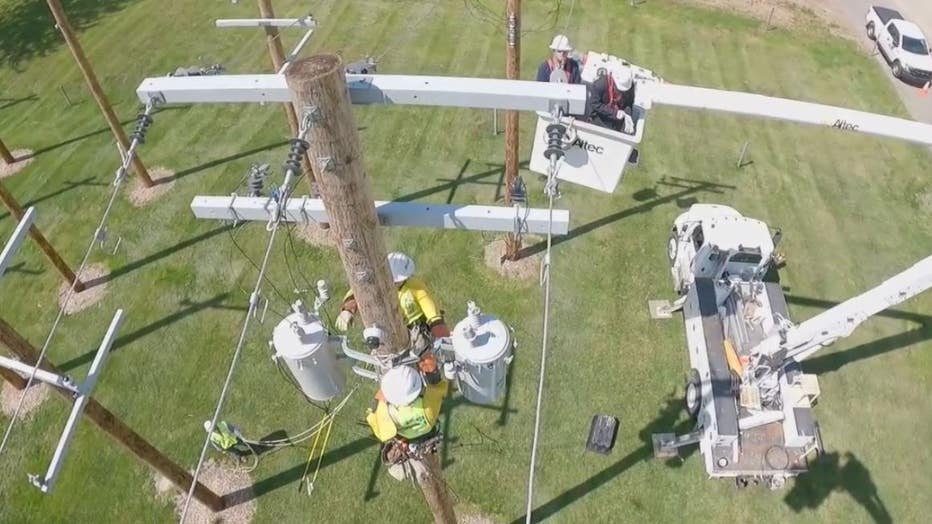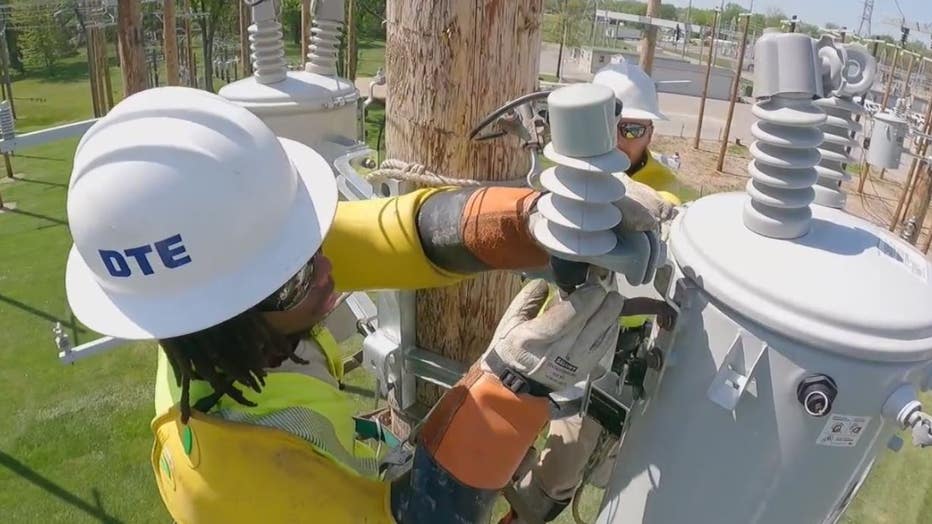DTE Energy shows what it does to get the power back on

DTE Energy shows the training process for what it takes to get the power back on
Brandon Hudson went 55-feet up in the air to see how DTE crews work to restore power in many of our communities in Metro Detroit. These guys work in all kinds of conditions ? from very warm to bitter cold.
WESTLAND, Mich. (FOX 2) - Whether it’s last winter’s ice storm or a strong summer storm like what Metro Detroit had Sunday, power outages are one of the biggest consequences of mother nature’s power.
They can also be a source of anxiety. Recently, DTE Energy gave FOX 2 a rare opportunity to come to their training school in Westland and get a first-hand look at the process it takes to get the power back on.
Before you see them working in the field, the men and women of DTE get their start there. It is a proving ground designed to help utility workers stay ahead of storm outages.
From tree trimming to checking meters, to an underground simulation.
"You may see a box truck sitting on the side of the road by a manhole," said Chad O'Connor, underground general supervisor, DTE. "We have a crew down there, and what they do is, they build a lead splice that may take eight hours, 36 hours, and sometimes, days."
Each job plays a critical role. DTE invited FOX 2 to suit up with personal protective gear, hop in a bucket and learn about another key role — changing transformers high off the ground.
Brandon Hudson went 55 feet up in the air to see how DTE crews work to restore power in many of our communities in Metro Detroit. These guys work in all kinds of conditions — from very warm to bitter cold.
Brandon: "Describe what the conditions were like working in that ice storm."
"That was a difficult one for us," said Joe McLaren, a DTE lineman. "The guys were working long hours as it was, and on top of that, you’ve got the wind and the rain when you’re out there in the field. And there’s no escaping it. There’s no barrier for that wind."
While seeing how workers change transformers. We met Joe McLaren, a second-generation DTE lineman, who worked to restore power after one of the worst ice storms in Southeast Michigan’s history last winter.
While he braved the elements. His company’s bosses braved the wave of emotions from frustrated customers.

For weeks, DTE came under fire for its response to the ice storm. Tens of thousands of people didn’t have power for nearly a week.
Brandon: "Given what you guys learned from this ice storm 2-3 months ago. How has that impacted the way you guys train, and how you guys will go in to these next few months of severe weather if it happens?"
"We have several hundred circuits that we identified as being needing some work based on the ice storm and based on previous issues we’ve had," said Joe Musallam, VP of operations, DTE.
"We have a plan on getting all 400 of those circuits ready to go and improved by summer. We also have a summer pre-peak list of all the things we need to do, to make sure our grid is optimized," he said.
Musallam says for DTE improving the grid is a critical priority, especially for a state challenged with power outages.
Recently the American Society of Civil Engineers released its infrastructure report, which says Michigan has more power outages than the national average - and it takes nearly 40 percent longer to turn the lights back on.
Brandon: "How is it the stuff that these guys learn here helps your crews out in the field with response time and reliability?"
"One of the things we’re definitely working on is we’re strengthening the grid," he said. "We’ve got a multi-point plan."
Musallam tells us dte keeps track of past storms and activity to better prepare and stage crews for severe weather events down the line.
Using the recent past - to stay ahead of an unpredictable future.


